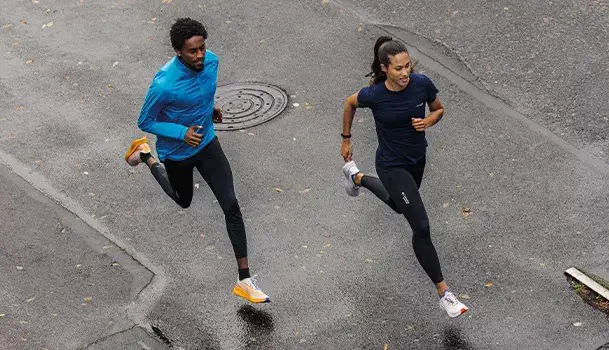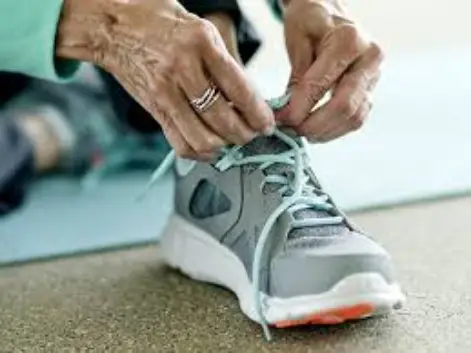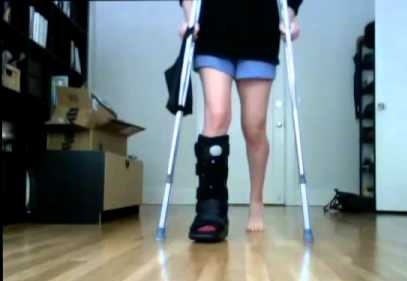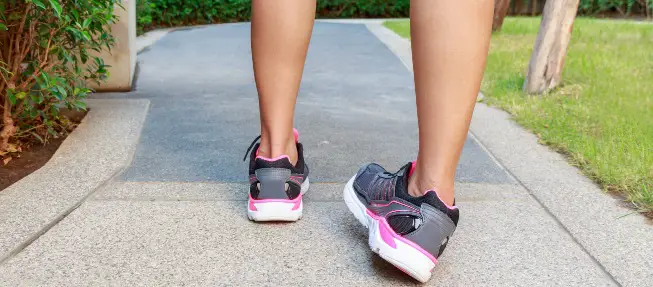
With so many different brands of sneakers on the market, it can be difficult to choose which one is best for your exercise needs. This is often because they may look similar in design but have different functions depending on how they are used.
This is why it is not surprising to see people confuse running shoes with cross-trainers.
While both shoes (cross-trainers and running shoes) are meant for exercise and can be used for walking or running, they have different functions in terms of how they are constructed, the materials that are used, and how they are supposed to be employed.
Understanding what cross-training shoes are, how they are supposed to be used, and how they differ from running shoes will help you make the best-informed decision about whether they are right for your needs or not.
What are Cross Training Shoes?
A cross-training shoe is what the name implies, a shoe that is designed for several different activities to be performed.
The most common type of cross-training shoe offers a greater cushion in the heels for running as well as more stability for lateral movement (such as needed when playing tennis).
They also have more cushions in the front of the shoe for activities that require jumping or being more on the toes, such as volleyball.
The term cross-training comes from a popular form of exercise that combines different activities to keep the muscles “guessing” and stimulate new growth.
In other words, the muscles will not tone or grow as fast if the same activities are performed daily.
So, the cross-training shoe is designed to allow you to participate in different activities without having to purchase different types of shoes.
As such, there are several advantages to purchasing cross-training shoes for your exercise activities. The main advantages of this type of shoe include the following;
✅ Flexible:
Cross-training shoes are designed to be flexible in different directions because they are for activities that cause you to move in different directions.Thanks to this flexibility, your feet can stay comfortable in a good pair of cross-trainers while doing several different activities.
✅ Durable:
A good cross-training shoe is tough, durable, and will last a long time with proper use.
While it is still subject to the erosive effects of the elements, the stress of moving in different directions, and how well you take care of the shoe, they are generally speaking more durable compared to running shoes.
✅ Cost-Effective:
While a good pair of cross-training shoes may be somewhat more expensive compared to a good pair of running shoes, they allow you to do different activities without having to pay for different pairs of specialty shoes. This saves you money in the long run as one pair does the job of several.
Overall, cross-training shoes are quite popular and offer many benefits. But can they do the job as well as running shoes when it comes to running, walking, or jogging?
Let’s have a look…

Running Shoes vs. Cross Trainers: Difference
There are notable differences between cross-training shoes and running shoes.
✅ Versatility:
The most notable difference is that running shoes are designed for one specific function, jogging and running. While cross-training shoes are designed to handle a wide variety of activities that goes well beyond jogging and running.
✅ Weight:
The next most obvious difference is the weight. Cross-training shoes are considerably heavier compared to running shoes. This is because running shoes are designed to be as light as possible, with cushioning only in certain areas.
Cross-training shoes are heavier because they have more material, more cushion, and more extensive stitching to handle the different stresses applied to the shoes.
✅ Cushion:
The weight of the cross-training shoes comes from the additional cushions, which are not required for running shoes. This is an obvious visual difference between the shoes as you can see the thicker sole and greater cushioning inside the cross-training shoes.
Running shoes tend to be thinner with fewer cushions, save for those at the heel and front of the shoe.
✅ Durability:
Of course, durability is somewhat more questionable because it does depend on different factors. How often you use the shoe and under what conditions matters considerably in how long they last.
However, cross-training shoes are designed to last longer because they undergo more stress compared to running shoes. Their heavier design, along with stronger stitching, makes them a solid, durable shoe compared to the lighter running shoe.
| Feature | Cross Trainers | Running Shoes |
|---|---|---|
| Cushioning | Moderate, multi-purpose | High-impact shock absorption |
| Stability/Base | Flat, wide for lateral movement stability | Streamlined for forward propulsion |
| Flexibility | Stiff, durable | Flexible, energy-efficient |
| Weight | Heavier | Lightweight to minimize fatigue |
| Ideal For | Gym workouts, HIIT, lifting, agility training | Distance running, jogging, track work |
Are Cross-Training Shoes Good for Walking All Day?
Yes—with caveats. Cross-training shoes can serve well for all-day walking, especially if your routine also includes a variety of movements, yet they may not be the optimal choice if walking is your primary activity.
While walking is a different motion compared to running, the cushion points are generally the same, and the lightweight shoe is better suited for walking activities.
However, the toughness and durability of a cross-training shoe do offer advantages, especially if you are engaging in other types of exercise activities.
Mixing up your walking with resistance exercises, dancing, or activities that cause you to move in different directions, such as tennis or volleyball, means that the cross-training shoe is a perfect choice.
What can be said is that cross-training shoes are arguably better for walking compared to running, but the difference may not be great enough to choose this type of shoe over a running shoe.
| Your Activity Mix | Best Shoe Choice |
|---|---|
| Primarily walking (long miles, steady pace) | Walking shoes (or light running shoes) |
| Walking plus multi-directional workouts or court sports | Cross-training shoes |
| Split routine—dedicated walking + varied workouts | Consider having both types |
Can You Use Your Cross Trainers for Running and Sprinting?
Cross-training shoes can serve you well for short runs, such as quick 1–3-mile jogs or interval sessions, particularly when they’re part of a broader cross-training routine.
Their sturdy, flat soles deliver excellent stability and support for lateral movements—like those in HIIT, aerobics, or gym workouts.
But here’s the catch: cross-trainers lack the specialized cushioning, flexibility, and shock absorption needed for sustained forward motion.
This can translate into fatigue, discomfort, and even injury during longer sessions. They’re often heavier and stiffer, which hampers running stride efficiency.
Smart athletes often alternate between both: using cross-trainers for gym sessions or mixed workouts, and a lighter, more responsive pair for runs.
The conclusion
Cross-training shoes are a great all-rounder—they help when you’re hopping from sprints to squats, lunges to ladders. But if you’re serious about daily walking or running, they’re not your best ally. Their weight and rigidity can hold you back; your body deserves shoes built for rhythm and road, not just strength and side-steps.
So, let cross-trainers be your versatile partner for the gym and multi-sport sessions—but when it comes to clocking miles on the track or sidewalk, invest in dedicated walking or running shoes. Your feet, joints, and performance will thank you in the long run.




